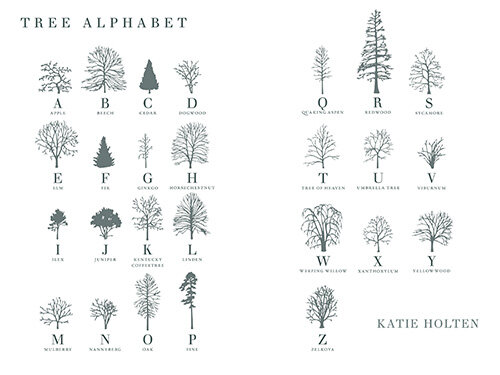 Cascadia Field Guide: Art, Ecology, Poetry
Cascadia Field Guide: Art, Ecology, Poetry
Edited by Elizabeth Bradfield, CMarie Fuhrman and Derek Sheffield
Mountaineers Books
My great-grandfather told my mother that it was important to know the names of plants and animals so you could properly greet them and introduce yourself. Our connection to the natural world should be personal.
Inviting us to “observe, smell, listen, dream, share stories, research, imagine,” Cascadia Field Guide offers a way to learn about but also connect with the natural world, to make it personal.
Unlike traditional field guides that help the reader identify plants and animals, Cascadia aims to offer readers “a way to ethically engage the heart” by including poetry and art alongside ecological information.
In the entry for the American Dipper, you will learn that the Yupik name for the swimming songbird means roughly “little bird that looks like smoke.” They can dive to 25 feet and walk along the streambed holding onto rocks with their toes. A poem by Gary Snyder celebrates this “trout-of-the-air.” In the illustration by Justin Gibbens, Dipper pierces the water.
Using the definition of the Sightline Institute, the editors define Cascadia as “the watersheds of rivers that flow into the Pacific Ocean through America’s temperate rainforest zone,” stretching from Southeast Alaska to Northern California’s Eel River. They have divided the region into 13 connected bioregions, or communities. Moving through these communities from north to south they introduce the reader to 128 plant and animal beings that call Cascadia home. Each being is paired with a poem from a wide-ranging selection of poets, old and new, regional and iconic. Each community is paired with an artist that creates an illustration for each being featured in that community.
 Artwork by Claire Emery
Artwork by Claire EmeryThe stories that accompany each entry honor the beings they introduce to the reader, capitalizing their names and using pronouns. The ecology presented combines science with the traditional knowledge of First Peoples, emphasizing the connections between habitats and the human.
 Artwork by Raya Friday
Artwork by Raya FridayThe tone is that of a friend, guiding you to meet Ochre Star in their tide pool. See those little spines? They are actually little pincers that toss off algae hitching a ride. When they take you to meet Devil’s Club, you will learn from Tlingit elder Helen Watkins that the berries are useful for combatting lice and making hair shiny.
When I head out to explore the mountains and beaches of my home, I carry books and tools so I can learn about the plants and animals I meet, and introduce myself, have a chat, maybe a nibble. This is a volume that should live in a pack, alongside binoculars, a hand lens and a notebook. Read a poem to a forest, rest your lunch on the pages while you watch foraging birds, enjoy a drawing of skunk cabbage and give it a sniff. And introduce yourself!
 The Language of Trees: A Rewilding of Literature and Landscape
The Language of Trees: A Rewilding of Literature and Landscape
Katie Holten
Tin House Books
Trees embody many of the things humans find themselves missing: stillness, collaboration, patience, clarity, peace.
In the introduction to “The Language of Trees: a Rewilding of Literature and Landscape,” Ross Gay adds gratitude to the list. He calls the book, and the tree typeface it introduces “an immense gratitude.”
 The over 50 texts in this collection are filled with gratitude, wonder and respect for the natural world, and artist and anthologist Katie Holten has literally translated them all into tree language.
The over 50 texts in this collection are filled with gratitude, wonder and respect for the natural world, and artist and anthologist Katie Holten has literally translated them all into tree language.
Holten has created a tree alphabet. For each of the 26 letters in the alphabet she has assigned an elegant drawing of a tree. Apple is for A. Transformed by the alphabet Holten has designed, these essays, poems and quotes are translated into forests and groves, a fusion of arboreal art and thought.
 Included texts come from writers, thinkers and poets from over centuries and continents, from Greek philosopher Plato to American environmentalist Robin Wall Kimmerer, from Indian writer (and aspiring tree) Sumana Roy to English band Radiohead. The threads connecting them all are language and trees, the power of words and of nature.
Included texts come from writers, thinkers and poets from over centuries and continents, from Greek philosopher Plato to American environmentalist Robin Wall Kimmerer, from Indian writer (and aspiring tree) Sumana Roy to English band Radiohead. The threads connecting them all are language and trees, the power of words and of nature.
Shorter poems and quotes become stately stands of trees, while longer prose pieces grow into great forests with dense woods and airy openings.
The book offers the magical experience of reading it in a tree language but the alphabet is also an invitation. The tree alphabet may be a new way for us to think and write about our own connection to nature.
Meg Olson is the co-owner of the Kingfisher Bookstore in Coupeville, which has a bit of everything but specializes in the natural and human history of the Pacific Northwest. She likes to explore, in person or on pages.